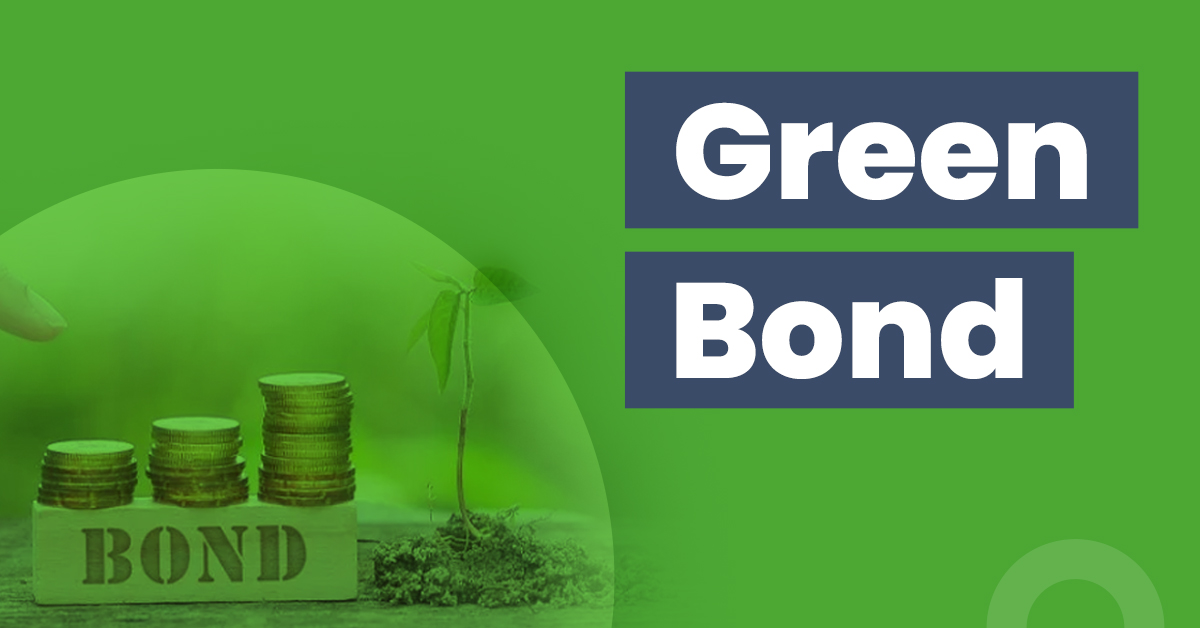Green Bonds: Meaning, Working, History and Advantages


Climate change is one of the biggest challenges faced by humanity with global warming and its impact threatening the survival of the human race. Tackling climate change requires global cooperation as well as heavy investment in various climate-resilient infrastructures.
Different multilateral institutions have developed several mechanisms for funding climate change investment. One of them is a green bond, which is a fixed-income instrument issued by an organisation to raise funds for climate and environment-related projects. Let’s see some of the different aspects associated with these bonds.
What Are Green Bonds?
As the name suggests, these bonds serve as a source of funding for green, environmentally sustainable projects. The word green implies renewable energy, conservation, clean transport, adaptation or resilience to climate change and sustainable resource uses.
Several multilateral institutions like the World Bank, International Finance Corporation, and Asian Development Bank issue green bonds and funds that they receive through these instruments are given to developing and underdeveloped countries for developing climate-resilient infrastructure.
As per World Bank estimates, they have raised about US$ 18 billion from green bonds through 200 bonds. Moreover, the raised amount was spread over 25 different currencies. The green bonds issued by the World Bank are some of the highest rated bonds with AAA ratings. Green bonds are linked with assets of the issuing entity, and they have the backing of the issuing organisation’s balance sheet.
These bonds come with different tax incentives so as to increase attractiveness and demand. It is a component of a larger trend related to socially responsible investment methods.
Also Read: 5 Rules of Equity Investment
How Do Green Bonds Work?
The main structure of green bonds is the same as conventional bonds. An entity will issue such bonds, and investors who purchase it will receive fixed periodic interest and a principal amount on maturity.
However, one major difference between the two is that a conventional bond does not come with end use restrictions, i.e., issuing entities can use proceeds in the manner that they wish. On the other hand, proceeds received after issuing a green bond shall only be used in green projects or projects that will help us in our fight against climate change.
The different types of projects for which green bonds are issued are:
- Renewable energy projects
- Energy efficient projects
- Pollution control activities
- Clean and green transportation
- Suitable treatment of wastewater
- Green housing projects
- Land management and natural resources projects
What Is the History of Green Bonds?
A report by the Intergovernmental Panel on Climate Change in 2007 described climate change caused due to human interference and its catastrophic impact if the global community does not take immediate steps. Therefore, Swedish pension fund authorities developed innovative and universal ways of raising funds for climate change.
Green bond was one of the various financing models developed in this regard. In 2008, the World Bank issued its first green bond, and since then, the market related to these bonds has grown exponentially. Till now, a total of 50 countries have issued green bonds for financing environmentally sustainable and friendly projects.
In 2012, the total amount raised from these instruments was a meagre US$ 2.6 billion. However, things started to become brighter after 2016, when there was significant interest from Chinese borrowers. In 2017, the issuance of these bonds reached record highs at US$ 161 billion.
The next bonds saw a bit of slowing down in the momentum, but it was a temporary glitch, with the total amount raised from such bonds in 2019 reaching another record high at US$ 266 billion. As per one estimate, in 2020, the amount raised by issuing green bonds stood at US$ 350 billion. This has been the journey of green bonds right from its inception. Although it is a relatively new concept, the enthusiasm and acceptability shown by investors promise a brighter future.
India recently finalised its Sovereign Green Bonds Framework to boost its renewable energy transition. The federal government will finance projects and initiatives in nine broad categories, including renewable energy, energy efficiency, and clean transportation, through its INR 160 billion (US$1.6 billion) worth of green bond offering in FY 2022-23 and future issuances. Foreign investors must note that payments of principal and interest on the issuances under India’s Sovereign Green Bond Framework are not conditional on the performance of the eligible projects and investors do not bear any project-related risks.
What Are the Benefits of Green Bonds?
Some advantages associated with green bonds are as follows:
- These bonds have the potential to create goodwill for issuing organisations as proceeds from them get invested in projects that will make our Earth a more habitable place.
- If you are a socially responsible investor who is concerned about rapid climate change phenomena and wants to play a part in mitigation measures, you can financially contribute and play your role.
- These bonds come with different tax incentives. You can use these deductions and incentives to reduce your gross tax liability.
- One of the biggest advantages for bond issuers is that raising funds through green bonds is cheaper than conventional means.
- As the amount raised is specifically for green projects, it will eventually lead to a more habitable environment for future generations.
What Is an Example of a Green Bond?
Let’s consider the functioning of green bonds with an example.
Austria launched its first-ever green bond on May 24 2022. The total amount raised through this was US$ 4.3 billion. The complete investor demand for these bonds stood at 25 billion Euros. Out of the total proceeds, Austria sustained around 250 million Euros.
The maturity of bonds is on May 23 2049. It provides a spread of 22 basis points to investors, which is down from 25 basis points during the initial period of sale. As per some estimates, Austria had to incur a cost of 5 billion Euros to finance this bond sale.
Final Word
Green bonds are a novel initiative to address the lack of resources in our fight towards climate change. Multinational corporations, federal or state governments and multilateral international organisations like the World Bank have the right to issue such bonds.
It is an efficient way of earning money if you are a climate-conscious and socially responsible investor. However, if you are looking to invest in these instruments, you should carefully go through related documents and terms before taking any decision.
Frequently Asked Questions
What are the different types of green bonds?
The various categories of green bonds are the use of proceeds bonds, use of proceeds revenue bonds, project bonds, securitisation bonds and senior secured bonds
What is the difference between green and blue bonds?
A blue bond is an instrument specifically meant to raise funds for protecting the ocean and marine environments. It includes projects for the conservation of coral reefs, fisheries, controlling plastic pollution, etc.
On the other hand, a green bond is a larger concept that deals with climate change mitigation projects, including ocean conservation projects. Therefore, we can say that all blue bonds are green bonds, whereas all green bonds are not blue bonds.
Are green bonds available in India?
Honourable Finance Minister Nirmala Sitharaman, in her budget speech for FY 2022-23, introduced the concept of green bonds in India. Now, the government would also issue these bonds to raise money for fighting climate change.
Who can issue green bonds?
Sovereign Governments and multilateral organisations like World Bank, IFC, and ADB can issue climate bonds to investors.






